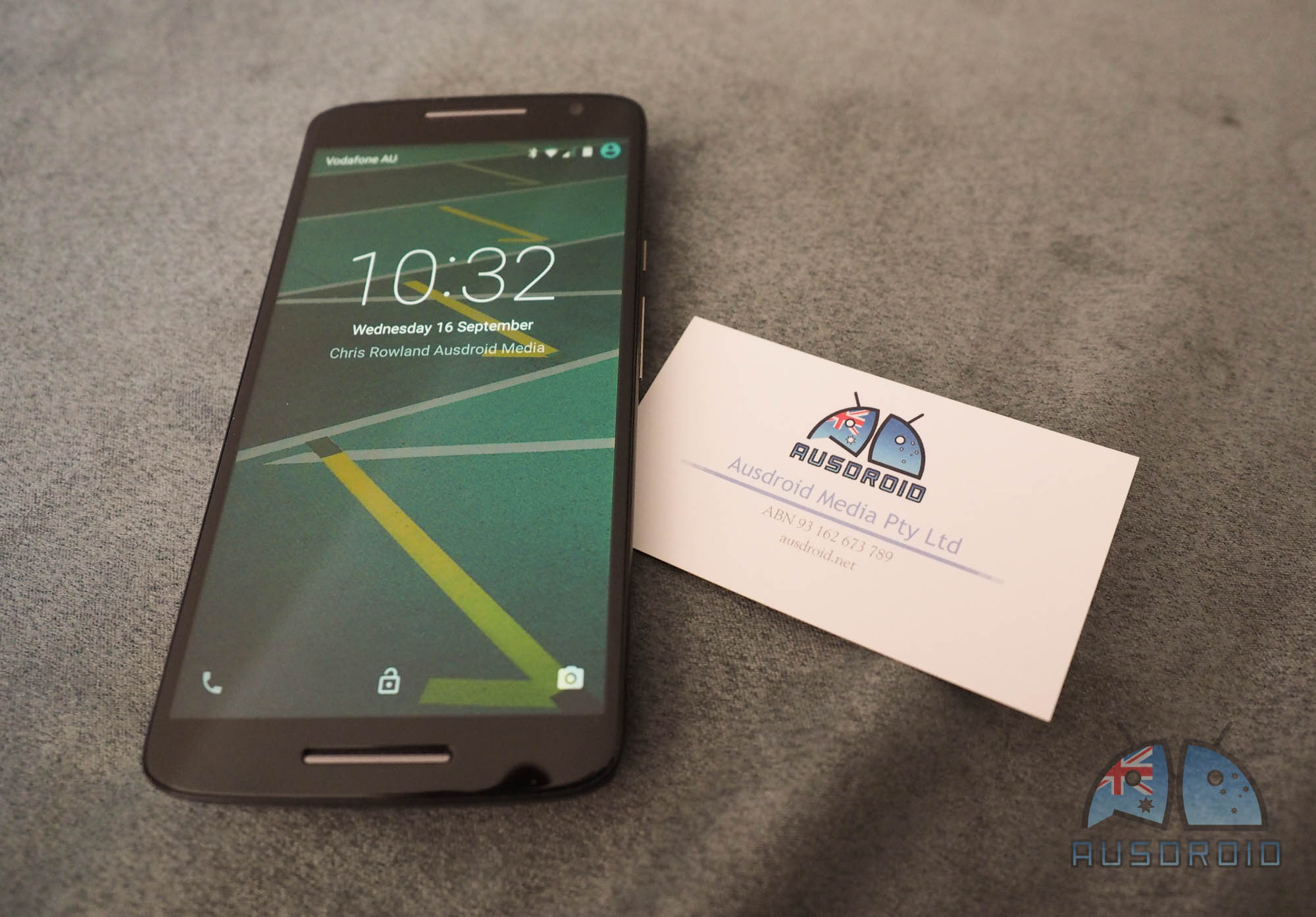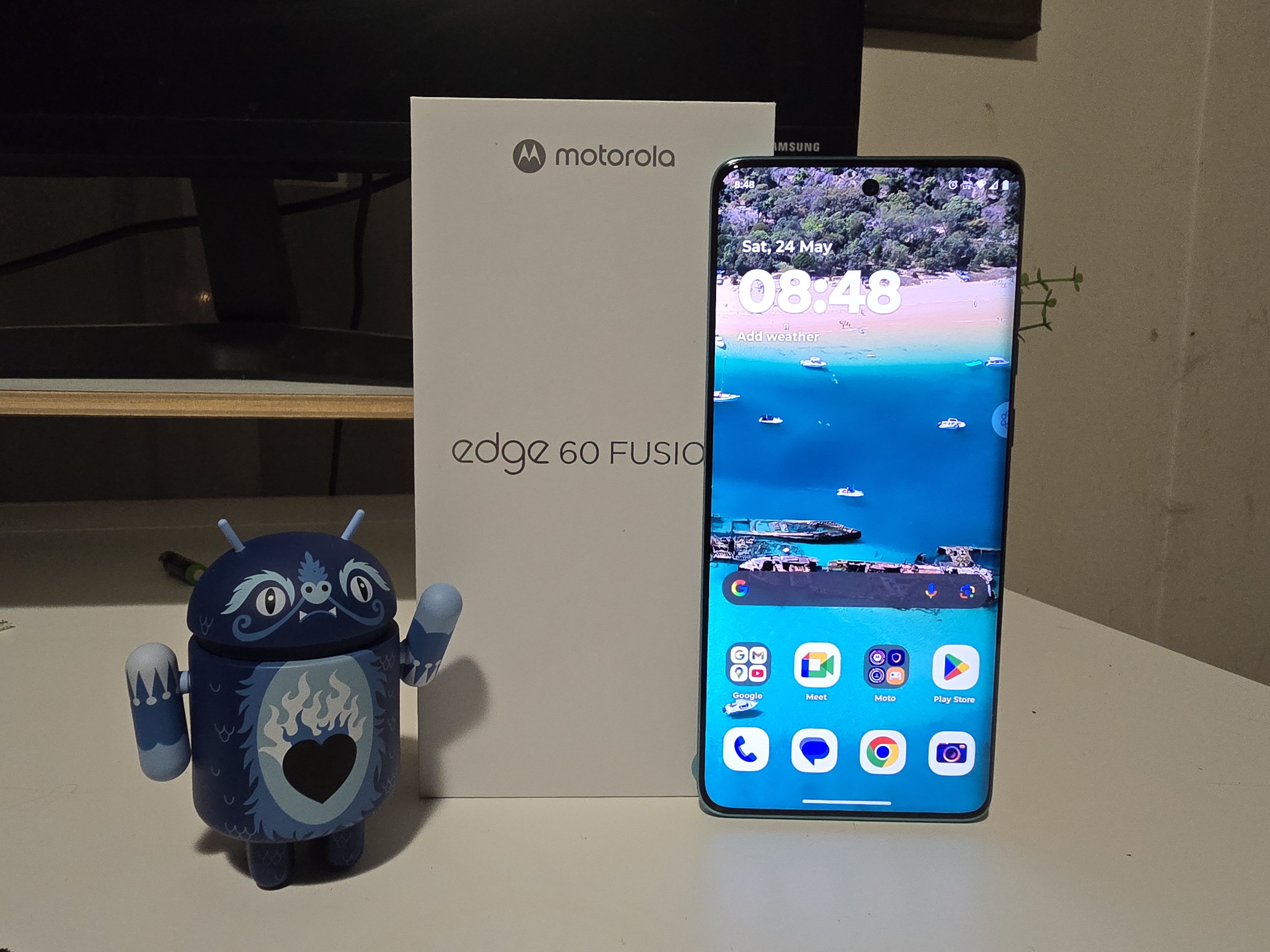
Since I first laid eyes on the Moto X Play back in August, I knew I was excited; for the first time in what felt like ages we had the beautiful industrial design of Motorola, paired with stock Android software, and (in 2015) finally the battery life to do it justice. Motorola’s Moto X Play, the second-tier smartphone released as part of the Moto X range this year, is an incredible phone, and I feel comfortable saying that having used it as a daily phone for the last month or so.
I took a fairly detailed look through the Moto X Play about three weeks ago, in my first impressions story. Looking back, much of what I wrote in that piece constituted a review, so there’s not an awful lot that I’m going to repeat here, but there’s a few areas of the phone that I think deserve a little bit more exploration.
If you don’t read the rest of this review, that’s cool, but read this:
Motorola have truly knocked it out of the park this year. We’ve sensed a momentum, a build-up of style, function and enjoyment over the last few years, and while their foray into Nexus last year was widely pilloried, Motorola have doubled down and produced some of the most competitive handsets on the market so far. Scott is reviewing Motorola’s X Style, and I the X Play, and I think it’s safe to say that both have been incredibly well received.
The Moto X Play has astounding battery life, great performance, a great (if not stellar) camera, and provides the perfect package for the discerning smartphone user. On top of everything else, the 3,600 mAh battery built in just powers on, and on, and on. 36 hours of sustained use is not unheard of (factoring in a sleep, of course), and in fact it’s a feat I repeated many times over.
If battery life is king, then the Moto X Play is the one phone to rule them all.
- Camera needs to be better at night. It works, but it isn’t on par with flagships.
- On-board storage of 16GB is disappointing; it really should start at 32GB.
- Snapdragon 615 just wasn’t the right processor for this phone. Snapdragon 808 would’ve nailed it.
I’ve already spoken much about what’s inside the Moto X Play, and I don’t think it needs to be explored any more fully than it has been already, so let me quickly just repeat what’s inside this puppy:
Motorola’s Moto X Play (known internally by its model number XT1562) is powered by a Qualcomm MSM8939 Snapdragon 615 chipset, which has been used in a couple of other mid-range handsets in 2015, including HTC’s Desire 820, OPPO’s R5, and Huawei’s P8 Lite. It’s most certainly not from Qualcomm’s Snapdragon 800 series, and benchmarks will reveal that performance (on paper, at least) is a little bit behind. However, don’t let that worry you just yet. Qualcomm’s SD615 is an octa-core CPU offering 64-bit processing, with 4 x 1.7GHz ARM cores and 4 x 1.0 GHz ARM cores; this means there’s power for the more demanding tasks, and more battery efficient cores to handle things when there’s not significant demand. 4G LTE Cat 4 is included on-board, Wi-Fi 802.11n/ac with MU-MIMO support, NFC, and QuickCharge 1.0 and 2.0 (which Motorola brands as Turbo Charge). In other words, this thing is a tank. Paired with the industry-standard 2GB for mid-range handsets, the only real let-down hardware wise for the Moto X Play sold in Australia is the on-board storage of just 16GB; as we noted yesterday, just shy of 7GB of this space is taken up by the system, leaving around 9GB for users to actually use. This is a little disappointing, but with support for 128GB MicroSD cards, there really isn’t too much of a problem — adding in such a card allows the Moto X Play to store music, photos and videos on that expanded storage, keeping your internal storage free for things that have to be there, like apps and games.
We have clarified, since writing the original piece, that the Moto X Play to be sold through Vodafone in Australia is the single-SIM variant only; while this is a bit of a shame, it’s understandable from a carrier’s standpoint — they don’t want someone else’s SIM in their phone! However, there is some ambiguity on the part of Motorola as to whether the dual-SIM variant will be later sold at retail. The initial indication was that this would happen, but there’s not been a lot of news on this front since the announcement back in August. With the delays getting other Moto products into shelves, and the Moto G (3rd Gen) not having shown up in retail yet, nothing is certain here. There has also been a bit of upset about the carrier tie-ups this year, however we urge a bit of circumspection when it comes to this. Motorola’s last real foray into carrier-land was with the RAZR M and RAZR HD with Telstra, and while both were strong, well received handsets, the experience with Telstra might not have been quite so strong (well, that’s just our impression). Since, Motorola has released a number of handsets into the Australian market, most notably in its Moto E, Moto G, and Moto X lines, but none have been sold via carrier contract; all have been available outright through retailers including JB Hi-Fi, Harvey Norman, The Good Guys and a few others. While this has done fairly well, we can assume, it’s not perhaps as lucrative for a handset manufacturer as selling through a carrier, which allows people to spread the cost of a new phone over monthly payments, and also gives a lot more stores nation-wide selling their products. With Vodafone’s woes over years past, and their recent growth and significant improvement, Motorola could only have seen a partnership with Vodafone as something of an affinity for them; both have had their time in the wilderness, both have recently improved their game significantly, and both are making (or wanting to make) significant growth in the Australian market. To us, this partnership makes good sense. To the customer, perhaps less so; the feedback from you guys, our readers, was so overwhelming that Vodafone undertook to sell both the Moto X Style and Moto X Play outright, without a carrier service, because there was such demand for the phone to be available to anyone who wanted it. In fact, our coverage of Motorola and Vodafone’s moves in this area in early September were so popular that we had something in the order of 500 comments across the stories, something we’ve not seen outside of Nexus-land. We hope — and trust — that Motorola will have the Moto X Play in retailers soon. Don’t let us down now, guys. The Moto X Play’s onboard storage of just 16GB seems limiting, and I brushed it off initially thinking that a MicroSD card would be my saviour, and it really wouldn’t matter. As much as that is the case, it’s not quite so simple. The first indication that space was running low was trying to install something from the Play Store, when I didn’t have a great number of apps already installed. A warning that there was insufficient space caught me by surprise … only realising then that I’d installed a MicroSD card, but not told the camera to use it. With that amendment in place, much of my storage space reappeared, but even now with not all that many apps installed, and my photos/videos/media on a MicroSD card, the Moto X Play has only 3GB of spare space. I don’t have any games installed (well, except Crossy Road), and no other apps that take up significant space. There’s a good number of popular apps which do take up quite a bit of room, and very quickly with these apps your Moto X Play could quickly fill. You can, of course, move apps to the MicroSD card as well, but this isn’t exactly user-friendly behaviour — moving apps to MicroSD is done through the Settings menu and then apps, and you kind of need to have some idea of what you’re doing. Why Motorola didn’t go for a 32GB base option for us in Australia is a bit beyond me … it’s the defacto standard, and when popular brands like Samsung and Apple are moving away from offering 16GB configurations, it’s incumbent on everyone else to think about doing the same.
Hardware and internals
On that Vodafone exclusivity…
A word on storage
A closer look at the camera
My initial thoughts on the Moto X Play’s camera were fairly good, and I’m certainly not backing away from that now. It’s certainly a good camera, even quite capable, but when put up against the current crop of iPhone 6s, Samsung Galaxy S6 and LG G4, the camera just doesn’t keep pace. Before picking things apart, let’s take a look through some sample photos, and talk about where some of the letdowns can be found.
Let’s start with where the Moto X Play camera does really well. Outdoors shots, that aren’t especially close up, are almost always capably handled. The beach photo (#2), the waterfall (#4), the shot of the limousine in San Francisco (#9), through the plane window (#12), and even at Allianz Stadium (#14) are all pretty workable shots. The last photo, too, of the Galston Gorge Bridge (#15) is quite a reasonable photo. In all these photos, the colour representation is accurate, the focus clear and sharp, and the composition bright and lifelike.
There are some instances, though, where the Moto X Play can’t take stock of the varying light conditions. Take the first photo at SBS (#1) and the photo at the cable car terminus (#6). Both have captured part of the image well, but haven’t handled the wide dynamic range, even with an HDR setting enabled. The SBS photo appears dark, though it was a well lit (and not overly bright) day, something a camera should’ve been able to handle. The cable car terminus photo captured the bright blue sky and clouds well, but left the ground-level subject (the cable car and assembled people) dimly lit .. it just didn’t get that balance right.
Night photos were sadly just a bit disappointing, as were zooms. Digital zoom is never a good thing for the discerning photographer, and sadly the photo of Alcatraz Island (#5) was just a bit to indistinct to be a really quality shot. As it happens, I pulled out the SLR and took a much better photo shortly after, but the Moto X Play just didn’t really do it justice. On that one, though, you might notice the colours are a bit off — this is due to fog around the bay area, and not any shortcoming of the camera.
The night shot, of the Bay Bridge (#8) is acceptable at the thumbnail level, but as soon as you open it up, or worse, hit the full crop, you can see that the Moto X Play is just out of its depth. This really shouldn’t have been too difficult a photo. An f/2 aperture is nice and bright, and the lights were not moving. A 1/15s shutter speed is fairly quick, and shouldn’t have introduced much by way of movement blur, but as you can see, the lights are blurred, and it just doesn’t look right. Curiously, the image is much clearer over the water where the reflecting lights show quite a bit of detail on the surface, but the subject — the bridge — just doesn’t look good.
On a positive note, the front-facing camera is quite impressive. I’m not a big selfie fan, but as you can see the photo taken at Allianz Stadium (with my son and I in Sydney Blue) is quite clear and of reasonable quality. Equally, the close-up photo of the tuna and quinoa salad turned out quite well, showing a good handling of close-up subjects.
The Moto X Play camera is definitely capable, and it’s fast — the twist to activate gesture is incredibly useful for one-handed operation (esp. when riding a cable car! see shot #7). I prefer the camera quality of the Samsung Galaxy S6 or LG G4, and there’s really no competition between those two and the Moto X Play, but the rest of the package offered by the Moto phone is enough to bring me across the line.
If there existed a phone that had the camera prowess of the Samsung S6, the manual camera controls of the LG G4, and battery life and software experience of the Moto X Play, I’d be all over that like a rash. No doubt. There is some promise that the Nexus 6P from Huawei might actually be those three mixed into one. We shall see.
Performance and Battery life
The one comment I’ll offer here, after a bit of time with the Moto X Play, is that the Snapdragon 615 is underpowered for this phone. Everything else is so close to top shelf, that using a lacklustre chipset really lets the Moto X Play down a little.
However, I’ll confuse this by saying you’ll probably not experience performance issues in regular use. The Snapdragon 615 is perfectly capable for most tasks, and it’s not as if the Moto X Play is horribly crippled by using that chipset. It’s more the case that there is that edge case where the Snapdragon 615 falls down, and a faster processor like the 808 would keep pace more easily.
Really the only time I noticed significant performance bottlenecks were when doing a large number of app updates while trying to use the phone and switch between apps. This brought it to a crawl. The reality is, though, this doesn’t happen often. In my experience with Android, most app updates tend to occur when your phone isn’t being used, and even high powered handsets do tend to struggle a bit when updating a number of applications at once.
A Snapdragon 808 would avoid much of this, and while it’s not the most powerful chipset on the market, it’s definitely a notch above the 615, and would’ve really rounded out the package.
Having used the Moto X Play for over a month now, I think my desire for a Snapdragon 808 inside is more because I want better for the phone, not because the user experience is the worse for not having it. In other words, the Moto X Play is already great; but with a beefed up processor (and maybe more RAM) it would have been absolutely brilliant.
Battery life
The benefit that the X Play gets from the Snapdragon 615, though, is undoubtedly battery life. It is a much more power-efficient chipset than the more powerful ones, and this — paired with an absolute whale of a battery — gives extreme battery life for a modern handset.
In an era where companies like Apple seem to be including smaller batteries, and where other Android manufacturers are going for more power hungry hardware without increasing battery capacity, Motorola is something like a vision; they’ve paired a powerful, well performing handset with a large battery capacity, in a device that is not significantly different in size or weight to anything else on the market.
And by different, I truly mean different.
The only other Android I’ve used with battery life approaching this kind of quality is Sony’s Xperia Z3, and they’ve done it by slightly different means. I don’t know exactly what power-saving Motorola has behind the scenes, but I doubt it’s like Sony’s Stamina mode, where various features get switched off while the phone sleeps.
Regardless, the result is the same. The Moto X Play can easily last 24 hours off the charger, with good, sustained usage during that period. There’s been quite a many days now where I’ve used the Moto X Play all day, got home at night, used the phone on the couch while watching TV and so on, and fallen asleep without putting the phone on the charger, and I’ve found it still at 40% the next morning, ready to go for another eight hours or so without needing a charge.
When Motorola quote 30 hours of mixed-use battery life, they actually mean it, and the Moto X Play can deliver.
Moto X Play
| Display | 5.5-inch, 1920×1080 resolution (403 ppi), Corning Gorilla Glass 3 |
| OS | Android 5.1.1 Lollipop |
| Processor | Qualcomm Snapdragon 615 octa-core @ 1.7GHz Adreno 405 GPU @ 550MHz Natural Language Processor, Contextual Computing Processor |
| Storage | 16GB or 32GB, SD card up to 128GB n.b. 16GB model reviewed |
| RAM | 2GB |
| Rear camera | 21MP f/2.0, quick capture, burst mode, night mode, auto HDR 1080p video at 30fps, slow motion video |
| Front camera | 5MP |
| Battery | 3630 mAh non-removable 30 hours mixed usage Micro USB port |
| Charging | Turbo-Charge 2.0 available. Wireless Qi charging not included. |
| Cellular (XT1562) | GSM 850, 900, 1800, 1900MHz HSPA+ 850, 900, 1800, 1900, 2100MHz LTE Band 1/3/5/7/8/19/20/28/38/41 Nano SIM |
| Connectivity | 802.11n, Bluetooth 4.0 LE, NFC, GPS |
| Speakers | Front-ported speaker |
| Dimensions | 148 x 75 x 10.9 mm, 169g |
| Water resistant | Water repellent nano-coating |
| Colors | Black with black back White with winter white back Choice of 14 different backs, 7 accent colors |
I always find it hard to come to a conclusion when the conclusion is so obvious.
The Moto X Play is great.
I really don’t know how else to wrap this up; it feels like forever that I’ve been waiting for someone in the Android space to come up with a handset that mixes enough of the features that I want, with the battery life and performance that I demand, and I remain to be disappointed. Most phones have features, or battery life, and not often both.
The closest I found, before now, was Sony’s Xperia Z3; just about every feature I wanted, except a camera that could just nail it, and battery life that went for a couple of days without compromising on features. LG’s G4 was a close contender here too; while it didn’t have multi-day battery life, it could certainly last a full day.
On the other side, there’s the phones that have all the features, bells and whistles — Samsung’s Galaxy S6, for example — but the battery life of an iPhone, where you could actually sit and watch the battery percentage drop in front of your eyes.
The Moto X Play feels like the best compromise we’ve seen so far; it has turbo charging, it has a fairly strong camera, it has stock Android which is likely to receive prompt updates, it has a MicroSD slot capable of 128GB MicroSD cards, and it has absolutely no bloatware to speak of.
The only thing that — for now, at least — lets the Moto X Play down is that it’s a bit difficult to get; except for the second half of September, the Moto X Play is only available through Vodafone stores at the moment, and they aren’t selling it outright. Customers on other networks will need to sign up with Vodafone to buy the X Play, and though there are ways to get it without committing to a 24 month contract, it’s certainly not straight forward.
Of course, we do recommend Vodafone as a network, but it isn’t for everyone — something we can readily accept. Equally, customers on other networks under contract aren’t just going to sign up with another carrier just to get a phone.
When Motorola get the Moto X Play into retail, which should hopefully be soon, I predict that anyone who buys one will be happy, and happy for quite a long time.



















